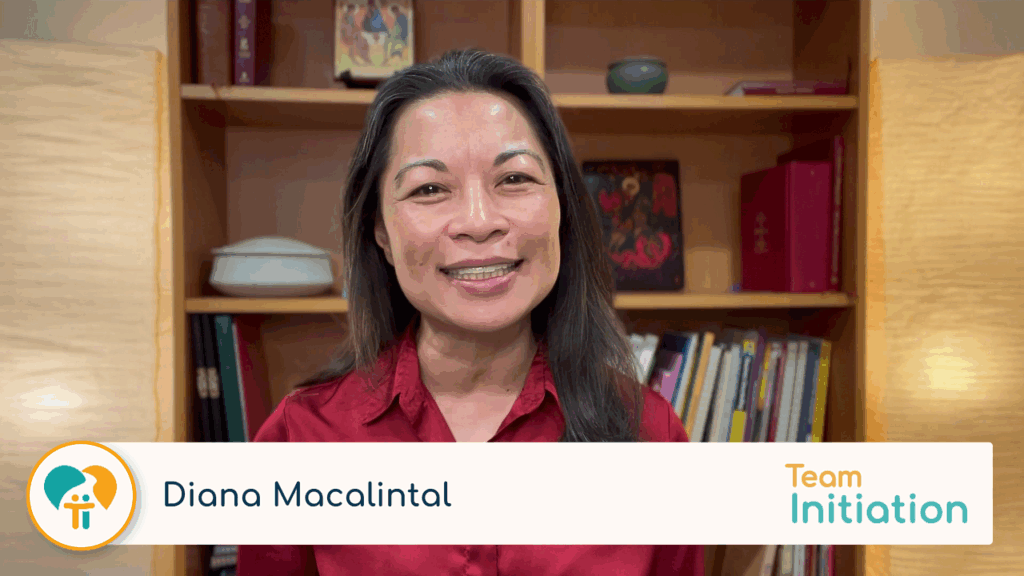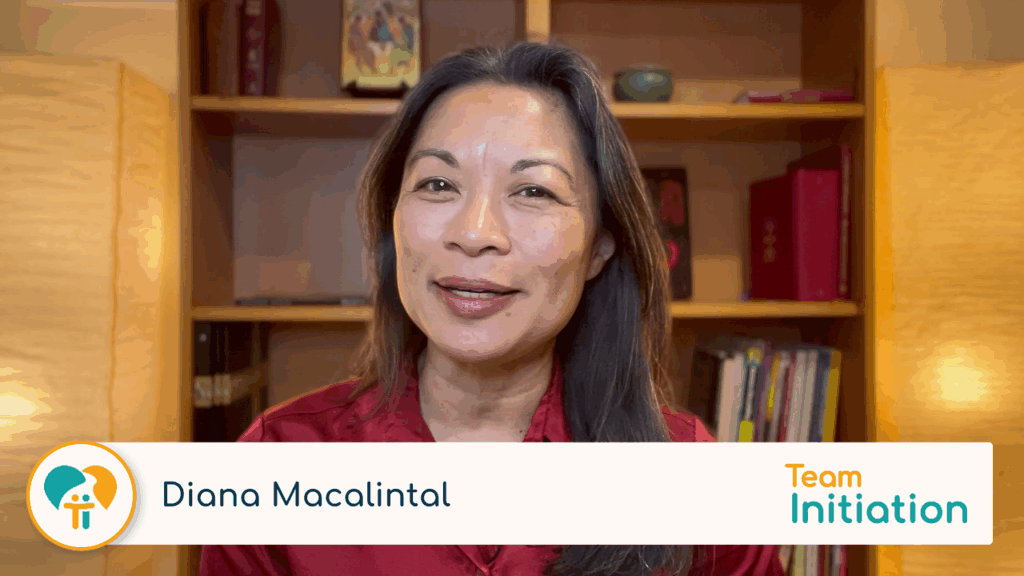
I know. There are supposed to be seven deadly sins. I did think of seven, but one of them isn’t deadly. So this will be the six deadly and one not-so-deadly sins committed during the Rite of Acceptance. These are not based on the standard seven that you’ll find in the Catechism. Rather, these come from the ancient Celtic book of Aelwais Dunethet Way.
1. Celebrating on the First Sunday of Advent
I’m told there are still lots of parishes that do this. I’ve asked and asked, and I can’t seem to find out why. Someone once told me they do it because then the catechumens can start their journey at the beginning of the “new year.” And then I asked if the catechumens are, in fact, spending a full year in the process in that parish. No. And so head scratching resumed.
Here are three criteria for picking a Sunday for the rite:
- When the readings are appropriate (read ahead a little and find a good day; First Sunday of Advent is not)
- When the parish is ready (meaning you don’t have a gazillion things to distract the focus from the catechumens like lighting and blessing wreaths, making announcements about the Giving Tree, and begging people to sign up for the Christmas choir)
- When the inquirers are ready (see Sin 2)
For more, read: When to schedule the Rite of Acceptance
2. Accepting people who haven’t completed the preflight checklist
The RCIA is very clear about the criteria for readiness. Marking time in the precatechumenate is not on the list. If you knew your pilot had been to flight school twice as long as any other pilot, would you feel good about getting on the plane? What if the reason he’d been in school so long was he just couldn’t figure out how to fly, but he’d been there so long they finally graduated him? It’s the same with inquirers. If someone has been an inquirer for six weeks or six years, they cannot move on to become catechumens until they show evidence of:
- first faith
- an initial conversion
- an intention to change their lives
- a desire to enter into a relationship with God in Christ (RCIA 42)
For more, read: RCIA Discernment: How do you know if they “know enough”?
3. Accepting people into the Order of “Catholichumens”
Many parishes celebrate a combined Rite of Acceptance and Rite of Welcome (of the baptized candidates). While the team members think they are making the distinction clear, they always fail Communications Theory 101. What you say isn’t necessarily what’s heard. To anyone who isn’t reading along in the ritual book, it looks like these are all the folks are the same—people who are going to become Catholic this year.
There is one really, really easy way to solve this. Celebrate the two rites on different Sundays. And when you do celebrate a welcoming ritual for baptized candidates, don’t use the one in the RCIA (which is optional). Instead, use a modified version of the “Order for the Welcoming of New Parishioners” from the Book of Blessings.
Or, download this Alternative Rite of Welcome that I wrote.
If you simply must celebrate the two rites together, then begin with the baptized candidates inside the church, while the unbaptized are waiting outside the church. Call the baptized candidates forward, introduce them to the community, and then all process outside to celebrate the Rite of Acceptance with the unbaptized.
4. Knock, knock, who’s there?
Gosh, I was floored when I heard this one. Some parishes are making the inquirers bang on the church door at the beginning of the liturgy. My, what kind of symbol is that? Our doors are closed; you have to bang on them to get in. We are saying they have to come to us instead of us going out to them. Let’s knock off the knocking and stick to the flow of the rite.
5. Keeping warm and cozy
What’s the flow of the rite? It’s very simple. We, the insiders, go out to get them, the outsiders, and bring them in. The rite says some of the faithful gather with the unbaptized outside the church. When the priest goes out to meet them (from inside the church), the rest of the faithful can join him, singing a song of welcome or joy (see paragraph 48). This isn’t what happens in many places, however. What often happens is, every good Catholic is in their own pew that had been specially reserved for them by their guardian angel before they arrived. It would be a huge inconvenience to ask them to now get up and go outside. They just came from there. What’s the point of going back out now? So instead, we pare down the ritual a little (who will notice?) to cut down on the grumbling.
Well, it’s true no one will notice. And that’s what’s wrong. The point of this rite is to notice that something new is happening. These are not just people who are joining the parish. They are turning to Christ for the first time in their lives. It’s worth standing up and going outside for.
The point of this rite is to notice that something new is happening. These are not just people who are joining the parish. They are turning to Christ for the first time in their lives. It’s worth standing up and going outside for.
6. Sticking to the script
Okay, are we all outside now? Great! What’s next? First the seekers are introduced to the community, and then the presider asks them why they’ve come and what they want. The “deadly” part is, thousands of seekers across the country this year will say they have come for the same thing and want the same thing (faith and eternal life). How is that humanly possible? It’s not. They don’t really say what they want. They say what we tell them they want. They say the words exactly as written in the RCIA—which they have never even seen! People! Let’s make this real. The text given in the rite is only an example. How do I know? Read the little tiny print just before the dialogue in paragraph 50. It says so, right there in black and white. (Well, it’s red and white in my book, but you know what I mean.)
For more, read: Why catechumens shouldn’t ask for faith
7. Dismissing the children
This is the not-so-deadly-sin. Once, when I was visiting a parish in another diocese, the pastor dismissed the baptized children for their own liturgy of the word service before celebrating the Rite of Acceptance. It’s not deadly to the rite itself, but it sure doesn’t help the children much. What could possibly be going on in the little room over in the parish hall that would benefit the children more than witnessing new people being brought into the church? There’s lots of processing, and gestures, and singing, and other cool stuff kids love. So this year, let the children stay and participate in welcoming the newcomers.
Now I have to come clean and admit I’ve been guilty of more than a few of these deadly sins. But never more than once. Okay, maybe twice. The point is not to be perfect. The point is to get a little better each time. A good challenge for your team would be to choose one thing about the Rite of Acceptance to improve the next time you celebrate it. And then another the next time. And so on. Once you’ve got it down perfectly, let me know. I’m still trying to get there.












Nick,
Do you have some suggestions on how to have the parishioners go out to welcome the unbaptized candidates when you have a very large parish, limited space outside and no sound system outside so everyone can hear. We have 700-800 people in church.
I struggle with this for these reasons. I certainly agree that it is the proper way to greet these inquirers and welcome them into the church, but our space is so limited.
Hi Elaine. Space constraints are the most difficult obstacle to overcome. Most of our churches simply weren’t built with initiation rites in mind.
In the past, I’ve rented a portable sound system for use outside. It’s not that expensive, but it’s not free either. It needs to be built into the budget. If I were in a place that had limited space outside, I’d also build in funds for a portable video system so the rite could be viewed on big screens inside the church. That’s more complicated and expensive, but cheaper than renovation. And our Protestant brothers and sisters do it every Sunday in some places.
Here’s another idea. On the Sunday on which the Rite of Acceptance is celebrated, begin the liturgy in the parish hall. The assembly gathers there instead of in the church. Then, after the signings, the entire assembly processes into the church, taking the catechumens over the threshold.
Thanks for your commitment and dedication to this important ministry. I know you are doing great work.
This is something we are going to try this September. We will have a few members of
our choir go out singing a song of welcome to
meet and process the unbaptized into the church.
At the same time the remaining choir members
will be leading the assembly singing the same song.
Finally everyone will sing the last verse together. First time to try this, can’t say for
sure how it will work. However, if there is a flow it should work well for all sizes of parishes.
Nick, thanks for this very simple, yet right on target article. I think the next popular date chosen is Christ the King Sunday, unless of course it happens to fall on the Sunday after Thanksgiving.
I like Alexis’ idea of having members of the choir go out. I sure hope you let us know how it worked.
Knocking on the door – whenever you visit someone, family, neighbor or friend – you knock on the door. Why wouldn’t it be okay to knock on the door of the church? It has meant a lot to previous catechumens -to knock on the door.
Before Mass, I invite parishioners who I know and who have experienced the rite, to assist with the signing of the senses..this also has a profound meaning to the catechuments not to mention parishioners.
Hi Rosie. I don’t want to discount the profound meaning this has for your catechumens and parishioners, but I do wonder exactly what that meaning is. We knock on doors when they are locked and we cannot get in. Or we knock when we show up unexpectedly, and we want to let the occupants of the house know we’re there. Or we knock when we arrive someplace where we are visitors to a place that is not “home.” None of these meanings apply to the catechumens. Also, the knocking implies the catechumens are taking the initiative for their own entrance into the church. In fact, it is Jesus, acting through the church, that goes out to get the catechumens and bring them in. I think the meaning of the rite is much clearer if we celebrate it as given in the RCIA itself. That’s why I’m not a big fan of the knocking!
Hi Nick,
We will be celebrating a Rite of Acceptance this Sunday. We always begin with them waiting outside while the procession begins. Father always explains briefly to the assembly what is happening and invites the parishioners to join him outside. He then walks back down the aise,welcomes and leads them along with their godparents into the church. They come down the aisle to the choir sing halle halle. The Rite then proceeds as usual. It seems to work well and get the assembly activly involved. We are a very large parish with an average Mass having 900-1000 folks in attendance.
Some of my Catechumens come back as Sponsors in their “neophyte year”, some become extra ordindary ministers, some men join the Knights of Columbus, work with Saint Vincent De Paul, others help with R.C.I. A.
The children become altar servers.
Our parish just recently received a new Pastor. This pastor comes with many new ideas for the RCIA. He has changed the process from a 9 month process to up to a 2 year process. I personally am having difficulty making this transition. How does a 2 year process work or function? HELP!
Hi Diana,
Be sure to check out our webinar next month. We’re going to be discussing that exact topic!
Develop a Year-Round RCIA Process (webinar)
https://teaminitiation.com/catalog/08-025nd/
Nick
Speaking as one of those people who had to knock at the Rite of Acceptance, I can say I clearly remember feeling as if I was an outsider coming in. Buuuuut, to be honest, that’s because that is literally what was going on… I was an outsider. I was not Catholic, I was not a part of the Church. But “outsider” is a bit of a harsh word — but I was clearly a GUEST, not a full member. So, the knock, for me, made me feel like a guest, but I felt very welcomed by the community through their applause, the whole RCIA program, and the ritual itself. In some ways, I think, the Rite of Acceptance is not just the Church accepting the catechumens, but the catechumens accepting Jesus’ invitation to come in. The knock symbolizes the catechumen’s acceptance of the invitation. I think it’s too early and too ideal to treat catechumens as if they are FULL members, like they’ve been here all along. They ARE guests that are MOST WELCOME and hopefully soon, will be full members. My two cents…I do agree now that it’s not an official part of the rite and so for that reason a good argument can be made to knock-out the knock.
We built a new and larger church. We got a new pastor. Then Covid hit. Somewhere along the way the part where the community left their pews to greet those going through the Rite got lost. We are determined to restore that welcoming gesture. We also lost the communities participation in the signings. We are going to restore this beautiful sign of welcome, hopefully in our next Rite.
Hi Sharon. It’s great to hear you a working so hard to provide a beautiful ritual experience for your seekers and parishioners. Thanks for your dedication.